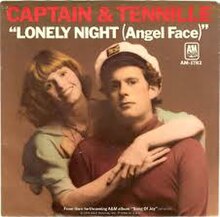파와나
Pawana 제2판 (표준) | |
| 작가. | J. M. G. 르 클레지오 Bruno Doucey (제3판) |
|---|---|
| 원제목 | 와이테 파와나 |
| 번역기 | 브룬스키 |
| 일러스트레이터 | Georges Lemoine (제2/3판) |
| 나라 | 프랑스. |
| 언어 | 프랑스어 |
| 장르. | 단편집 |
| 출판인 | 갈리마르 |
발행일자 | 1992년 7월 26일 |
| 페이지 | 54 |
| ISBN | 978-2-07-072806-0 |
| OCLC | 27025357 |
파와나(또는 Waité Pawana)는 프랑스의 노벨상 수상자인 J. M. G. 르 클레지오가 프랑스어로 쓴 단편 소설이다.
이력 베이스
저자에 따르면, 이것은 포경업자 찰스 멜빌 스캠먼 (1825–1911)[1]에 대한 실화이다.1857년 12월, 스쿠너선 마린호(Marin호)의 찰스 스캠먼은 그의 스쿠너선 마린호(Marin호)와 함께 라구나 오조 드 리브르호(Jack-Rabbit Spring Lagoon)에 들어갔고, 그레이웨일호의 마지막 피난처 중 하나를 발견했다.이 이야기는 허먼 멜빌의 모비딕에 나오는 아합 선장의 이야기와 유사하다. 그는 또한 흰 고래를 찾기 위해 목선 갑판에 있었다.
파와나는 19세기 말 멕시코에서 회색 고래가 번식하러 갔던 석호의 발견에 관한 이야기이다.Scammon 선장이 실수로 고래를 박멸하기로 결정한 후, 그는 자신이 너무나 끔찍한 실수를 저질렀다는 것을 깨달았다.그리고 나서 스캐먼 선장은 이 고래들을 구하기 위해 그의 일생의 일을 헌신하기 시작했다. 그리고 그렇게 [2]함으로써 멕시코 혁명가의 도움을 받았다.
'Awaité Pawana'의 의미
"Awaité Pawana"는 감시자가 고래를 염탐할 때 내는 울음소리이다.
내러티브
낸터킷 출신의 늙은 인디언 노예인 아라셀리는 어린 선실 소년에게 마임과 제스처를 통해 과거 인디언들의 공적에 대해 이야기한다.존, 18살의 선장 소년과 스캠먼이 번갈아 가면서 여행 이야기를 합니다.
적응
조르주 라보당은 파와나를 아비뇽[3] 축제로 무대에 올렸다.
리뷰
온라인에서 "Awite Pawana"의 10페이지 리뷰를 읽어보십시오.
같은 사건에 대한 두 가지 상반된 관점을 보여주는 이 두 가지 이야기적 목소리는 특정한 연극적 특성을 가지고 있다.
발행 이력
초판 프랑스어판
- Le Clézio, J. M. G (1992). Awaité Pawana (in French). Paris: Gallimard. p. 54. ISBN 978-2-07-072806-0.
제2 프랑스어판
- Le Clézio, J. M. G; Illustrated by Georges Lemoine (1995). Awaité Pawana (in French). Paris: Gallimard-Jeunesse (1995:Lecture junior, 52;1999 Folio junior, 1001)). p. 87. ISBN 978-2-07-058777-3.
제3판 프랑스어판
- Le Clézio, J. M. G (2003). Awaité Pawana (in French). Illustrated by Georges Lemoine ;lecture accompagnée par Bruno Doucey. Paris: Gallimard :La bibliothèque Gallimard. pp. 127/144. ISBN 978-2-07-042842-7.
첫 번째 영어 번역
"Awaité Pawana"는 Christophe Brunski (AGNI Magazine: Boston University (2008)에서 발행)에 의해 영어로 "Pawana"로 번역되었습니다.온라인으로 [5]번역할 수 있습니다.
레퍼런스
- ^ "Marine Mammals of the Northwestern Coast of North America". by Charles Scammon, 1874. 2000-12-21. Archived from the original on 2009-10-21. Retrieved 13 January 2009.
- ^ "RÉSUMÉ :" (in French). Archived from the original on 25 January 2009. Retrieved 13 January 2009.
"C'est une histoire authentique, celle d'un baleinier, Charles-Melville Scammon, précise Le Clézio. Cet homme aussi fabuleux et légendaire que le capitaine Achab, de Moby Dick de Melville, après avoir découvert au Mexique à la fin du siècle dernier une lagune où se reproduisaient les baleines grises, décida de les exterminer..." Puis, se rendant compte qu'il commettait une erreur irréparable, il consacra sa vie leur sauvegarde, aidé par les révolutionnaires mexicains.
- ^ Lavaudant, Georges (1992-07-26). "Pawana Theatre;Festival d'Avignon in July 1992". TNP-Villeurbanne. Retrieved 2008-11-14.
Georges Lavaudant staged Pawana for the Festival d'Avignon
- ^ Thibault, Bruno (2008) [1997]. ""Awaité Pawana": J. M. G. Le Clézio's Vision of the Sacred". Journal Article:, Cengage Learning ,2008 Gale. University of Oklahoma /World Literature Today. Retrieved 2008-11-20.
These two narrative voices, which present two contrasting perspectives of the same event, possess a certain theatrical quality.
[데드링크] - ^ Brunski, Christophe (2008). "Pawana by J. M. G. Le Clézio translated from the French". AGNI Magazine : published at Boston University. Archived from the original on 2008-10-12. Retrieved 2008-11-10.


